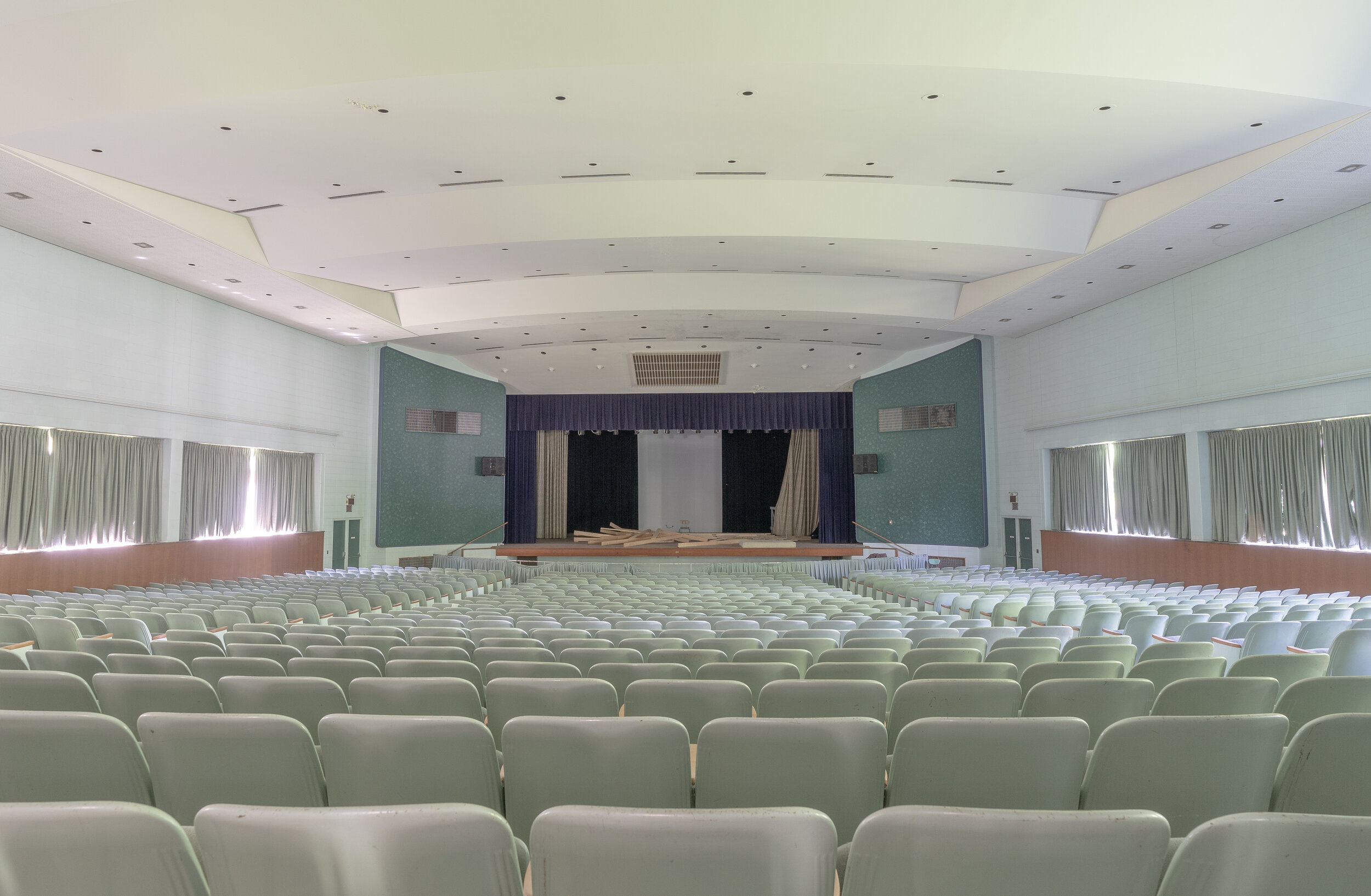Lynnewood Hall is a 110-room mansion that was originally built as the Widener Mansion in 1900. It was built from Indiana limestone in an ornate Neoclassical architectural style. Often referred to as the “The Last of the American Versigh” Lynnewood Hall was considered to be noted-architect Horace Trumbauer’s masterpiece. It was built for street-car investor and magnate Peter A.B. Widener to house his expanding family and his massive art collection.
@sketchyjawns
@sketchyjawns
Today, over 120 years after being built, the once bustling elegant mansion sits vacant; towering from behind the weathered wrought iron gates as it awaits a new chapter in its storied legacy. Before the turn of 20th century, prominent businessmen throughout the United States began to mass great fortunes through the development of many new industries, such as railroads, steel production, and mining. Most people have probably heard the name Carnegie, Rockefeller, Vanderbilt, or even Morgan. These are the names often associated with the great wealth, extravagance, and luxury of that time period, which later became known as the Gilded Age. Another name synonymous with wealth during that time periods that often gets forgotten or overlooked, is Peter A.B. Widener and the Widener family. Peter A.B. Widener was born in 1834 in Philadelphia, Pennsylvania. Growing up he learned the “ins and outs” of businesses and investing. His first investment to net him a small fortune was buying stocks in streetcars and being involved with public transportation systems around the country. His wealth and power did not stop there.
@sketchyjawns
@sketchyjawns
He became one of the richest men in Philadelphia after investing US Steel, Standard Oil, and the Pennsylvania Railroad. In 1900, Widener moved into his newly constructed mansion in Elkins Park, Pennsylvania named Lynnewood Hall. Wideners put blood sweat and tears into lynnewood hall and it became his pride and joy for many years to come as the 110-room, 55 bed room, mansion became Wideners art gallery. After Peter Widener’s wife passed in 1897, he became involved and even invested in the R.M.S. Titanic. In 1912, Peter Widener’s son George, his wife Eleanor, and their son Harry (Peter Widener’s grandson) planned to travel back home following a family vacation in Europe. On April 14, 1912, a day that now lives in infamy, George Widener was in the midst of hosting a diner aboard the ship, as he was celebrating the Titanic’s splendor and his father’s latest investment. During the diner party, the Captain of the Titanic, E.J. Smith, left the diner party to go check an iceberg warning. This iceberg is said to be the one that the Titanic collided with, causing the “unsinkable” ship to indeed sink. George Widener and his son Harry, escorted his wife Eleanor to one of the lifeboats and watched her aboard to safety. Both George and Harry Widener would become two of the 1,500 people that tragically sank to the bottom of the Atlantic Ocean with the Titanic. This tragedy would push Peter Widener into isolation. Within a relatively short amount of time, Peter Widener had lost his wife, his son, and his grandson in tragic circumstances. In 1915, Peter Widener passed away in Lynnewood Hall at the age of 80 years old. Many people say that he died of a broken heart. In 1952,
@sketchyjawns
@sketchyjawns
Lynnewood Hall was sold and it became the Faith Theological Seminary. Unfortunately, Faith Theological Seminary began to sell alot of Lynnewood Hall’s valuable assets, including over 350 acres of land and most of the notable artwork, statues, sculptures, and ornamentation. Faith Theological Seminary left the one-time glamorous and stunning mansion in almost complete disrepair. In 1996, Richard S. Yoon purchased the gorgeous mansion and he planned to turn it into a branch of his church, The First Korean Church of New York, but the large estate became too difficult and expensive to maintain and the mansion was eventually left vacant in the 2000’s. Apart from the two guard dogs that once roamed free to chase away trespassers and the curious, it sat rotting away and fell apart more and more, year after year. Although the mansion’s interior and exterior is most certainly a far cry from its hey day, many traces of the original elegance remain in tact. We welcome you to follow us into the famous Lynnewood Hall through the videos and photography by Abandoned Central.
@sketchyjawns
@sketchyjawns
@sketchyjawns









